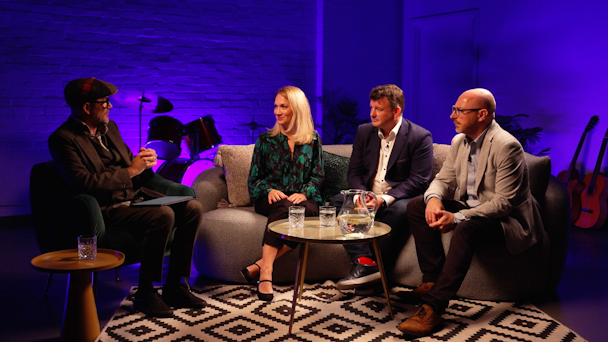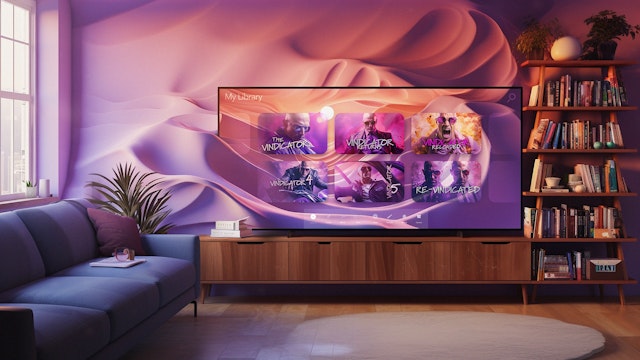5 major life trends impacting how brands can stay relevant with customers
Kicking off a five-part video series from The Drum and Accenture Song, we explore five emerging customer trends impacting how CMOs must orchestrate their marketing strategies to find growth and relevance in today’s increasingly changing world.

New video series explores how to orchestrate marketing strategies in a changing world
It’s commonly accepted that customer-obsession is the best growth strategy – but it takes meticulous orchestration to play a meaningful and relevant role in the lives of customers. That’s because customers are messy, they’re emotional and changing faster than businesses can change themselves.
“In the intricate landscape of modern life, how people perceive themselves in the world is shaped in part by mediated layers that drive their interactions and facilitate their experiences,” says Katie Burke, global thought leadership lead at Accenture Song and author of its Life Trends 2024 report.
“The speed of change in the world – from technology, from macroeconomic forces – has increased for both customers and businesses. Whether it’s defined as disruption or just plain change, there’s a pressing need for brands to welcome these changes as an opportunity for growth.”
Enter ‘In Concert with the Customer’ – a five-part video series from The Drum and Accenture Song, with special guests – exploring the changing dynamics between technology and humanity across the front and back stages of marketing to help CMOs stay in sync with their customers. The first episode sets the stage for the series, against the backdrop of Accenture Song’s Life Trends research.
1. We’re in a decade of deconstruction

The first of these trends suggest that we’re in a decade of deconstruction; one where traditional life paths are being re-routed by new limitations, necessities, and opportunities, significantly shifting demographics. People are questioning everything that was once considered obvious, challenging long-standing ideas, and shaping new ways of thinking, acting and living.
“People are taking different routes through life, everything’s moving so much faster, and brands need to keep up with the choices customers are making,” explains Mark Sherwin, managing director, Accenture Song.
“Brands that can fit into a fluid lifestyle are succeeding, while those that box into a traditional path will find it tricky and complicated to be relevant to customers today.”
With macro and technical forces changing things so rapidly, it’s difficult for societal systems to keep pace. As customer behaviors and needs evolve, marketers will need to revisit market research, user journeys, and customer mindsets to understand the new priorities and life milestones of target demographics, adapt engagement tactics and marketing strategies to stay in tune with these shifts.
2. A great interface shift is happening

A new intelligence layer is coming into every single digital interaction a person has. The rising use of generative AI is upgrading people’s experience of the internet from informative to intelligent, and their experience of using it from transactional to personal, making them feel more digitally understood and relevant than ever.
“This intelligence layer is going to stimulate intimacy – and that means they’re going to have more of an affinity to every single digital interaction,” explains Burke.
“It’s going to build empathy, it’s going to drive customer loyalty – but the big kicker is that it’s not just brands being able to use this type of technology; their users are going to be able to use the same technology to interact with brands.”
Shaping hyper-relevant products, services and experiences that address common user pain points across all digital interfaces will become opportunity spaces for brands and platforms – across all areas, from search to visibility to service.
But this is more than just a technical innovation. Shifting human behaviors and expectations will be a significant and rapid change for businesses to adapt to. Marketers should explore integrating the approach and AI expertise into core teams and plan for seamless customer engagement that unifies marketing, sales and service processes through conversational interfaces.
3. When did creativity become so ‘meh’?

Creativity was once about the audience but has become increasingly dependent on playing the tech system, inhibited by efficiency mindsets, and by middleman technologies playing gatekeeper. Audiences are bored, and so are creators. Entertainment and brand content has lost its edge, leading to a feeling of blandness. With potential cultural and creative stagnation on the horizon, those willing to invest in genuine innovation and creativity have a powerful opportunity to stand out.
Differentiation will mean pivoting away from the safety of the familiar and restoring faith in novelty. Marketers will need to bring the focus back to creativity (and champion it) – in product, service innovation, branding and marketing, design and content – using new and emerging technologies to push the boundaries of craft, while ensuring generative AI doesn’t become a railroad to cliché.
“You can’t just fit into the templates all the time. That will work and it will deliver a certain level of performance,” says Sherwin. “You need to have a space for what we call ‘creative lunacy’.
“The more people create, there’s going to be more noise so it’s about finding a way of cutting through and it’s got to be unique, different and willing to move away from the template.”
4. Where is the love?

For years, the correlation between customer experience and revenue growth inspired organizations to hold the customer at the center of every decisions. Now, cuts – from price increases to quality cuts, illogical subscriptions to poor customer services – have shunted customer obsession down the priority list – and customers are noticing.
It’s creating friction between customers and brands across all channels, and compromising on customer experience across touchpoints in the marketing funnel, jeopardizing trust, conversion rates and long-term loyalty.
In response, marketers should think about the brand’s “elasticity of forgiveness” to determine the extent to which customers are willing to overlook and forgive negative experiences with the brand, connecting sentiment feedback to responsive systems to create long-term solution for enhancing meaningful experiences to keep products in their basket.
Joining the discussion with his view as the former marketing director at Carter Jonas and now involved in a spicy honey start-up business, Tom Foulkes says: “It’s absolutely central to what we do as marketers to understand customer needs and create the most compelling proposition or product that you possibly can. But a trap that marketers can get into is assuming that their customers wants to fall in love with their business.
“No one loves their price comparison site, right? Because maybe no one wants to love that price comparison site. Instead, maybe what that needs to be is the most frictionless transaction and experience you could possibly create and that would be the most compelling proposition.
“We have to look at the nature of the relationship, what the customer is looking for and what’s appropriate at any given moment.”
5. Error 429: human request limit reached

Humanity’s interaction with technology stands at a pivotal juncture. With the acceleration of innovation, people’s sense is that technology is happening to them, rather than for them. Looking ahead, the tech industry and all who rely on it will need to upgrade their responsibility from compliance to care, and work towards contributing positively to people’s wellbeing rather than draining their resources.
“Technology is a massive driver of change and it’s happening to us at an exponential pace,” says Burke. “It feels like every time there’s a new breakthrough, we are required to get smart on it very quickly, adapt our lives around it and make sure our lives are still in balance with the wellbeing of what we need as humans.
“We’re at a point where we’re putting our hands up and saying, we’ve had enough. All this change is overwhelming. The mental load for us to process and adapt is at a peaking point.”
The rapid pace of technological innovation demands careful decision-making now, as choices will have long-term impacts on both business and society, especially since ethical considerations often lag new tech waves. Brands can’t hide from the oncoming tide of people seeking control of their relationship with technology, and adjust technology to become part of the solution.
“It’s beholden to us as marketers and brands to really simplify people’s lives, the content they’re receiving, and the way they interact with us and the world,” says Sherwin. “There are all these tools and opportunities but if you don’t think deeply about the role you’re playing in someone’s life – beyond the boundaries of the brand, product or service you’re offering – it can end up being just more of the noise.
“It’s an opportunity for simplification, for aggregation of content services, to simplify people’s lives. Brands that do that are going to really resonate.”
For brands to stay relevant with their customers, it's key to remember that relevancy is changing incredibly fast.
“Don’t just orchestrate what you did yesterday, more efficiently, more effectively, and think you’re going to stay relevant,” concludes Sherwin. “Make sure you’re spending as much time on understanding life trends and what’s going on with customers in that front stage space. Otherwise, you could optimize whilst becoming less and less relevant.”
Watch part one of the ‘In Concert with the Customer’ series on setting the stage for customer relevance, on The Drum TV.
Images in this article are attributed to Accenture Life Trends report - you can read the full report here.
Content created with:

Accenture Song
Accenture Song accelerates growth and value for our clients through sustained customer relevance. Our capabilities span ideation to execution: growth, product and...
Find out more
